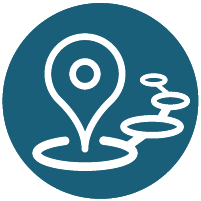Your AI Assistant: Building Custom GPTs for Educators
,
Grand Hyatt - Lonestar Ballroom E
Session description
Outline
1. Welcome & Introduction (5 minutes)
Content: Quick welcome, overview of what participants will learn, and the purpose behind creating your own AI tools.
Engagement: Ask: “What’s one repetitive task you’d love to get help with?”
2. Writing Better Prompts with the Prompt Booster (10 minutes)
Content: Show how great AI starts with a great prompt. Teach a simple Prompt Booster Template to help educators write clear, consistent prompts.
Engagement: Share common classroom prompt examples and have attendees revise one of their own.
Process: Prompt Booster Template (digital) for ongoing use.
3. What Are GPTs & Why They Matter in Education (10 minutes)
Content:
Overview of GPTs and how they’re used in schools for grading, planning, feedback, and more
Tour the GPT Store and highlight free, educator-friendly GPTs
Show examples of how these tools save time and promote reusability
Engagement: Invite participants to explore the GPT Store and note which tools spark ideas.
Process: Start a discussion about favorite finds and how they could use them in their work.
4. Exploring How to Create a Custom GPT (15 minutes)
Content:
Explain the two ways to build GPTs:
Using the no-code Create tool
Using the Configure section with a shared template
Share a simple configuration template to guide custom builds
Engagement: Encourage questions and let participants preview what they’ll build.
Process: Walk through the process step-by-step, prepping them for the hands-on activity.
5. Hands-On: Create Your Own GPT (20 minutes)
Content: Participants begin designing and building a custom GPT for a classroom or leadership task.
Engagement: Work individually or in small groups. Encourage peer sharing and support.
Process: Circulate to assist, answer questions, and provide suggestions for flexibility and reusability.
6. Share & Collaborate (5 minutes)
Content: Discuss how educators can share GPTs safely across their school or district.
Engagement: Group brainstorm on collaboration ideas and protecting student data.
7. Q&A + Next Steps (5 minutes)
Content: Answer practical questions about classroom use, data safety, and AI integration.
Engagement: Invite participants to share one AI idea they plan to try next.
Process: Summarize key takeaways and offer follow-up support or resources.
Supporting research
1. AITeach Pro: Don't buy AI solutions, create your own!
https://www.aiteachpro.com/
2. Transforming Lesson Plans: A K-12 Educator’s Guide to Customizing GPTs (Richard Campbell)
https://richardccampbell.com/chatgpt-for-teachers-achieve-framework-k-12/
3. Key Guidelines for Writing Instructions for Custom GPTs (OpenAI)
https://help.openai.com/en/articles/9358033-key-guidelines-for-writing-instructions-for-custom-gpts
4. How to create a custom GPT: A beginner's guide (Zapier)
https://zapier.com/blog/custom-chatgpt/
Presenters

Session specifications
Topic:
Audience:
Attendee devices:
Attendee device specification:
Participant accounts, software and other materials:
www.chatgpt.com
Subject area:
ISTE Standards:
Change Agent
- Create a shared vision and culture for using technology to learn and accelerate transformation through the coaching process.
- Cultivate a supportive coaching culture that encourages educators and leaders to achieve a shared vision and individual goals.
- Connect leaders, educators, instructional support, technical support, domain experts and solution providers to maximize the potential of technology for learning.

 Back
Back Trips and Tours
Trips and Tours